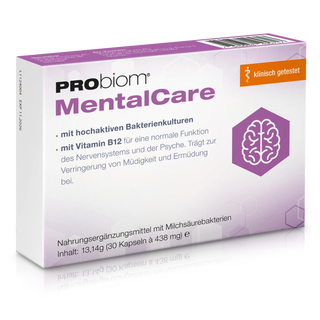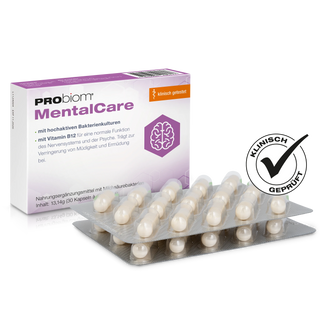Bladder infections, medically known as cystitis, are among the most common bacterial infections, especially among women. While many people consider them an occasional inconvenience, recurrent cystitis can have a significant impact on quality of life. The microbiome plays a central, but often overlooked, role in this process. This article explores the connections between cystitis and the microbiome, as well as possible prevention and treatment approaches.
What is cystitis?
Cystitis is usually caused by a bacterial infection of the urinary tract. The most common cause is Escherichia coli (E. coli), a bacteria normally found in the intestines. Various factors, such as a weakened immune system, inadequate hygiene, or sexual intercourse, can cause these bacteria to enter the urethra and trigger an infection. Typical symptoms include:
-
Burning when urinating
-
Frequent urge to urinate
-
Lower abdominal pain
-
Cloudy or foul-smelling urine
The microbiome: A crucial factor
The microbiome refers to the totality of microorganisms that colonize our body, particularly the intestines, skin, and mucous membranes. The urogenital system also has its own microbiome, which plays an important role in the defense against infections. A healthy microbiome in the bladder consists of a balance of different bacterial species that form a natural protective barrier against pathogens.
How does the microbiome influence bladder health?
-
Protective mechanism through beneficial bacteria: Certain bacteria, such as Lactobacillus species, promote a healthy vaginal flora and prevent the growth of harmful germs. A disturbed balance (dysbiosis) can increase the risk of cystitis.
-
Influence on the immune system: The microbiome interacts with the immune system and helps to build an effective defense against infections.
-
Antibiotic therapy and dysbiosis: Frequent antibiotic treatments for cystitis can destroy not only pathogenic bacteria but also beneficial bacteria. This can disrupt the microbiome's balance in the long term and promote re-infection.
Microbiome-friendly prevention and treatment approaches
1. Probiotics and prebiotics
Probiotics, especially Lactobacillus supplements, can help restore the microbiome and inhibit the growth of harmful bacteria. Prebiotics such as inulin or oligofructose promote the growth of healthy microorganisms.
2. Diet and lifestyle
A high-fiber diet with plenty of vegetables, fermented foods (e.g., yogurt, sauerkraut), and sufficient fluid intake can positively influence the microbiome. Cranberry products can also prevent E. coli bacteria from adhering to the bladder wall.
3. Avoid unnecessary antibiotics
For frequently recurring cystitis, antibiotics should not always be used immediately. Alternative treatments such as D-mannose, herbal preparations (e.g., bearberry leaves), or immune modulation can help prevent infections and protect the microbiome.
4. Promote vaginal health
Since vaginal flora is closely linked to bladder health, the use of lactic acid suppositories or probiotic vaginal products can help maintain a healthy microbiota.
Conclusion
The microbiome plays a crucial role in the prevention and treatment of cystitis. A healthy bacterial balance in the gut, vagina, and urinary tract helps reduce the risk of infection. Targeted support of the microbiome through diet, probiotics, and careful use of antibiotics may prevent cystitis in the long term.


















